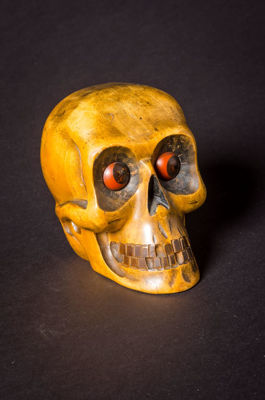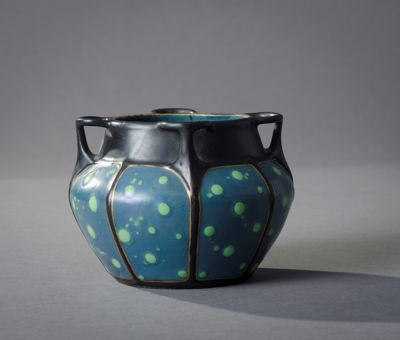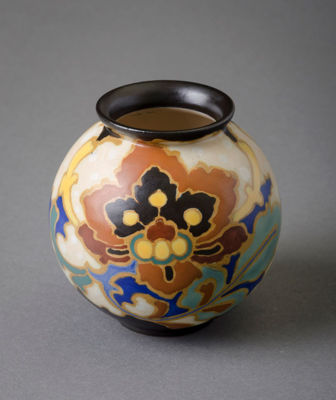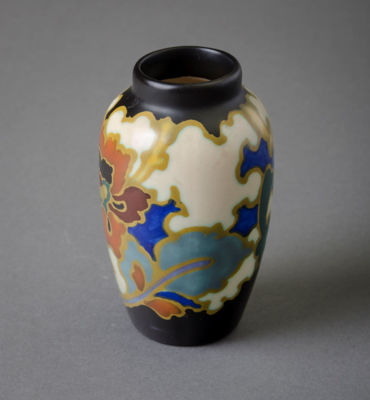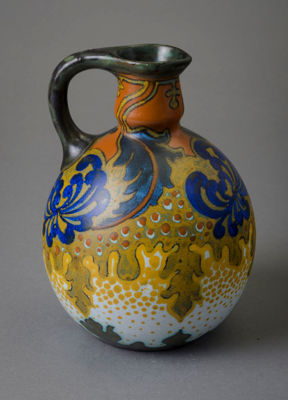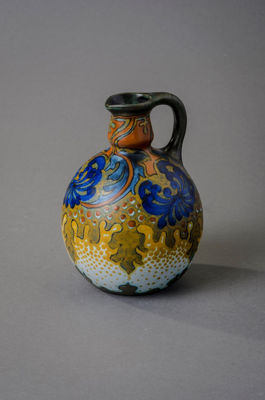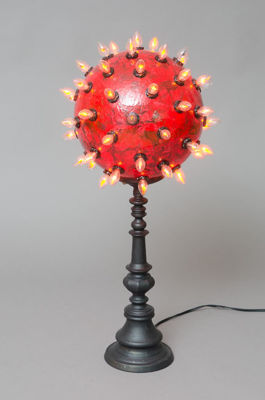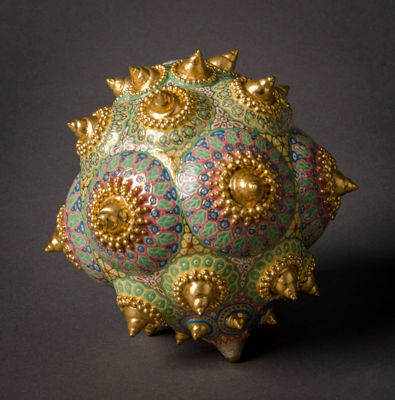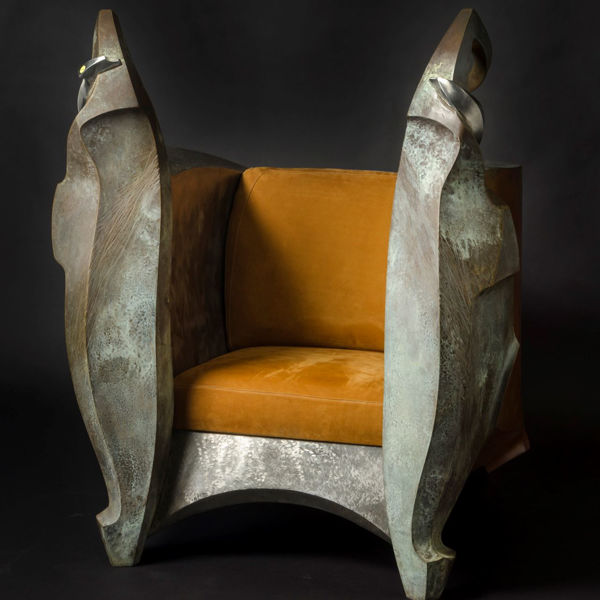Decorative and Design
Title: Side Table
Prototype side table with two-tiered ash laminate tops, one stained, on black enameled metal base.
Title: Side Table
Created for the east hotel in Hamburg, Germany, a boutique hotel and restaurant which reimagined the ruins of and old iron foundry. almost every architectural and design component was created using foundry imagery and techniques. Dramatic shifts in scale and the juxtaposition of old and new evoke in the guests the feeling of a westerner in Asia for the first time. in the permanent collection of the art institute of Chicago, and included in the art institute's exhibition young Chicago.
Title: Skull Rolling Eye Clock
#9731, carved wood, impressed number, 3 3/4"w x 4"d x 4 1/4"h
Title: Small Regina Vase
Gouda is a style of Dutch pottery named after the city of Gouda. Gouda pottery gained worldwide prominence in the early 20th century and remains highly desirable to collectors today. Gouda pottery is diverse and visually distinctive in appearance, typically illustrated with colourful and highly decorated Art Nouveau or Art Deco designs.
Title: Small Regina Vase
Gouda is a style of Dutch pottery named after the city of Gouda. Gouda pottery gained worldwide prominence in the early 20th century and remains highly desirable to collectors today. Gouda pottery is diverse and visually distinctive in appearance, typically illustrated with colourful and highly decorated Art Nouveau or Art Deco designs.
Title: Sona Jug
Gouda is a style of Dutch pottery named after the city of Gouda. Gouda pottery gained worldwide prominence in the early 20th century and remains highly desirable to collectors today. Gouda pottery is diverse and visually distinctive in appearance, typically illustrated with colourful and highly decorated Art Nouveau or Art Deco designs. Six pieces: Two Nova claret jugs (1925), Dorian planter (1925) and low bowl (1923), and Indus vase and lantern (c.1930)
Title: Sona Jug
Gouda is a style of Dutch pottery named after the city of Gouda. Gouda pottery gained worldwide prominence in the early 20th century and remains highly desirable to collectors today. Gouda pottery is diverse and visually distinctive in appearance, typically illustrated with colourful and highly decorated Art Nouveau or Art Deco designs. Six pieces: Two Nova claret jugs (1925), Dorian planter (1925) and low bowl (1923), and Indus vase and lantern (c.1930)
Title: Spanish Art Nouveau Vitrine from Oak Dining Room Suite
Vitrine. Part of a Spanish Art Nouveau Oak Dining Room Suite, comprising a vitrine, a server, a sideboard, an extension table, two armchairs and twelve side chairs, each with carved foliate decoration throughout.
Title: Sphinx - Black Basalt
Wedgwood Black Basalt Model of a Sphinx, England, c. 1900, the seated figure mounted atop a raised rectangular base decorated with hieroglyphs in relief, impressed mark
Title: Squat Vessel with Arrowroot
Large squat vessel with arrowroot leaves, matte green glaze, Colorado Springs, CO, 1906; Signed AA/VAN BRIGGLE/3/1906/439; 5 1/2" x 11 1/2";




